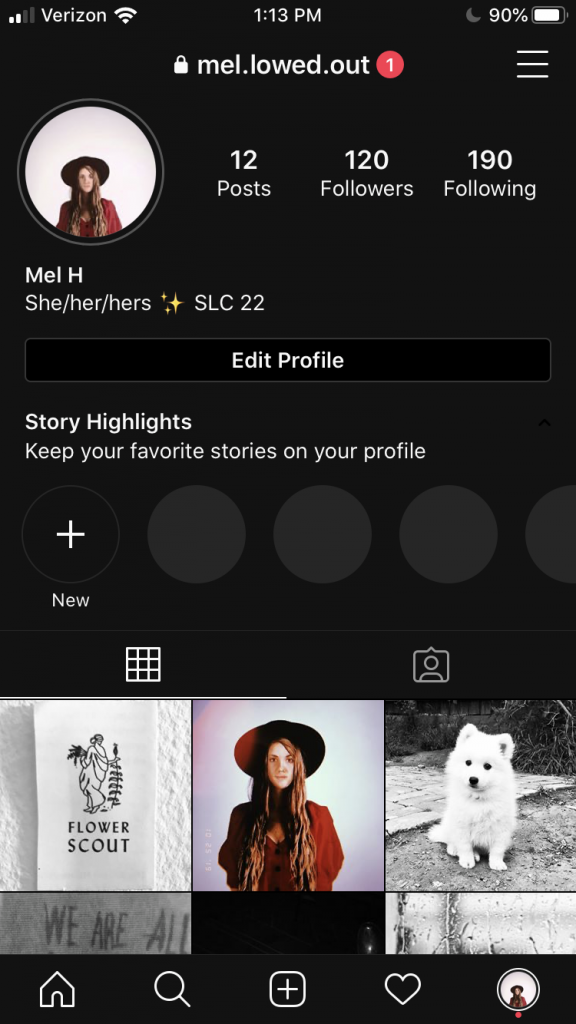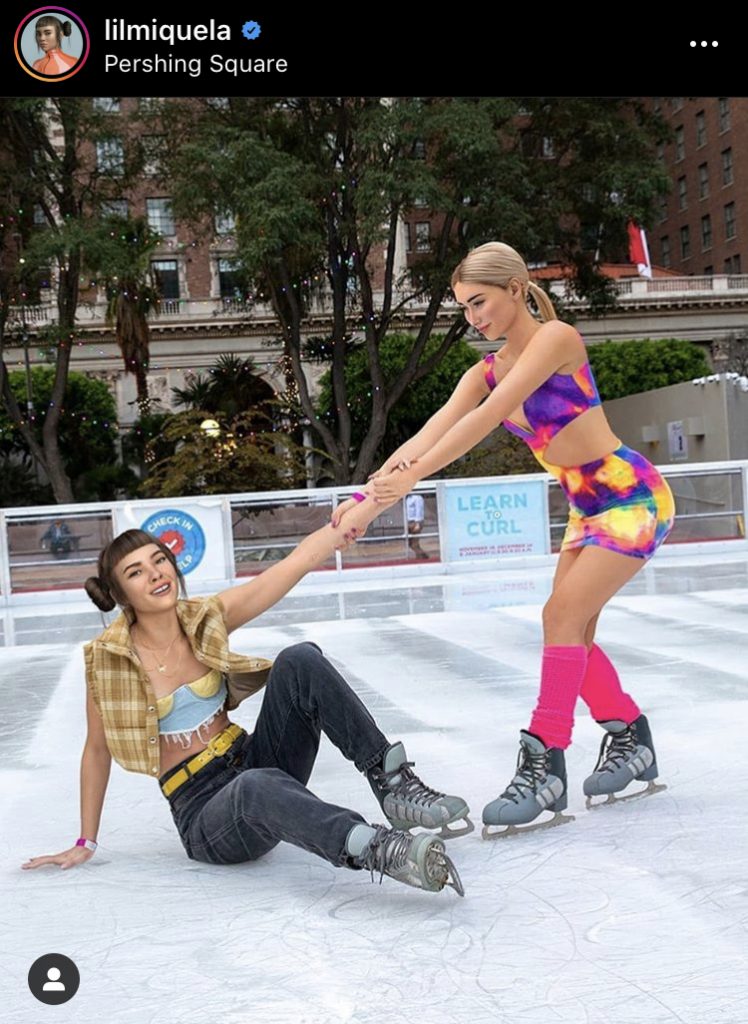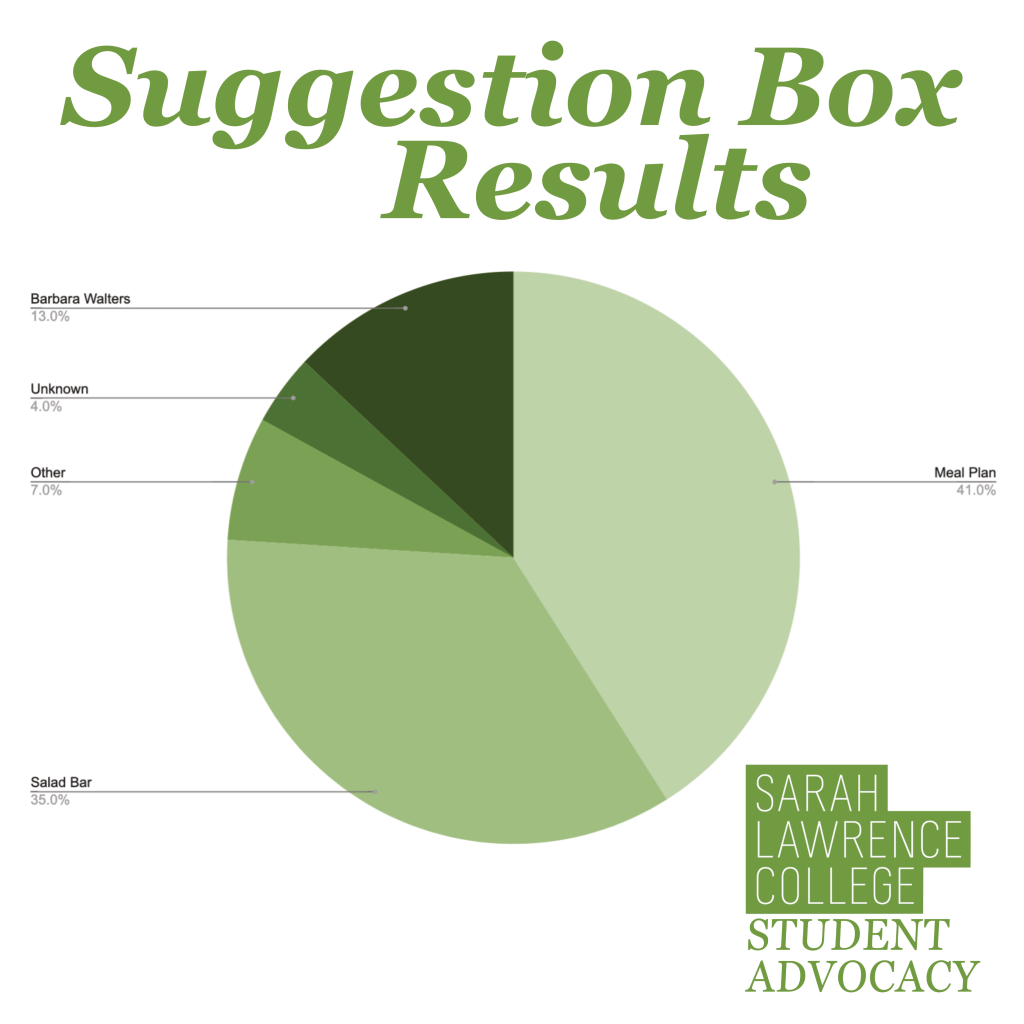
Daly McGrath
Several months before the start of the 2019 Fall Semester, I came across an account on Instagram featuring a person named Miquela Sousa, under the username @lilmiquela. Initially, she seemed to be just another Instagram influencer who posted about style and her other cool influencer friends, but I also found her name attached to a 2018 article from The Cut written by Emilia Petrarca, titled “Body Con Job: Miquela Sousa has over 1 million followers on Instagram and was recently hacked by a Trump troll. But she isn’t real.”

Miquela is a 3D model designed to look like a social media influencer, and her persona is run by the Los-Angeles-based media group Brud. In other words, she doesn’t exist. Regardless, the presence she has as a personality and in the lives of her followers is interchangeable from that of a real person’s. Emilia Petrarca best put the situation in the following passage taken from the article:
“We humans have been tripping over the differences between real and fake ever since our forebears saw shadows on cave walls. But it used to be that real-looking fake humans were confined to Disney parks, movies, music videos, or video games. We could turn them off, or leave them behind. Now they occupy spaces once reserved for real-life people experiencing real-life things.”

Previously, she existed solely within her bubble of her relatively small following. Now, she has over 1.8 million followers, and deals with Spotify and Samsung Mobile. People place value on her posts and thoughts as they would with any real person. I remember being fascinated with the kind of presence that you can create with someone who doesn’t exist. It made me question what it even meant to exist as a person in a digital society.
Going into the class with Angela, I was aware that I wanted to do something with this question I had. All of the ideas I had that were related to @lilmiquela involved using it in the context of large groups of people- one of my initial ideas was to make a persona in the context of a peer in a political campaign. However, developing a conference idea pushed me to think a little smaller, and I started seriously looking at the project as something to do within the boundaries of Sarah Lawrence.
In my own personal experience, so much of campus culture occurs online. Twitter, Facebook and Instagram accounts linked to SLC are everywhere- we have an excess amount of people looking to establish a platform in any genre of campus culture. The account @slcmissedconnections, by far the biggest SLC-related platform on Instagram, essentially developed into a bulletin board for campus for people’s opinions and thoughts. Comments were displayed anonymously by a moderator that never gave their followers a real name. Other similar accounts, like @slcanonymous and @overheardslc, provide similar services that students use.
Anyone can participate in SLC’s social media culture- many times, I have been able to acquaint myself with someone from their presence online before meeting them in person. The pressure of adhering to social media etiquette is often overwhelming, and even though I may have never actually interacted with someone in real life, the pressure to follow arbitrary rules like follow-for-follow is frequently present.
With that in mind, it was clear to me that a persona tailored for SLC social media culture would have an easy time transitioning into that space. So I started my project by developing a persona fit to go to SLC to explore what it meant to exist within community. Thus, the persona Mel H. was created under the instagram handle @mel.lowed.out.

In my mind, I wanted “Mel” to be your average white girl at SLC- ideally, she would be the kind of person you think you might know from somewhere but had no real defining features to recognize. I took a bunch of stock image references and photoshopped them together to create a portrait of this persona. From there, I posted a bunch of images that I found to be aesthetically pleasing to develop Mel’s feed, set her account to private, and followed a bunch of random SLC accounts to develop a plausible connection to the school.
Initially, I wanted my goal to be to participate in social commentary that went on on SLC accounts on social media and make friendships exclusively using those platforms. However, at the time I was developing the persona, I couldn’t fully articulate the steps I would need to take to accomplish my goal, so I shifted gears to focus on a single campaign.
The idea of online security at SLC was also something I was interested, and I thought it might be effective to draw attention to the lack of online security that our public Wifi server (SLCWAN) provided us by utilizing the peer aspect of spreading information through the school. However, this also fell apart when I tried to bring it up on Missed Connections, as someone pointed out other layers of online security that was not visible to the students.
From there, I became stuck on how to progress. At that point, I had gained 120 followers and averaged between 8-10 likes on each of the pictures that I posted. However, I got a DM message from a student who was suspicious of my activities since Mel didn’t exist anywhere else, and I ended up relaying the project details to this person after they had voiced concerns that the account was being used for malicious purposes.
Last-minute, I decided to shift gears into another social-media-focused area: official SLC accounts. Most SLC-sponsored groups have made Instagram accounts to advertise their services, so I built a fake-official account from the previous account I had made from Mel that was centered around student advocacy, titled Sarah Lawrence College Student Advocacy Committee. I had a much more clear-cut idea of what I wanted to happen in this context: a fake committee that portrayed itself as a way of advocating for student interests, and then posting Onion-esque things (“We listened! The Barbara Walters Salad Bar is now open extra hours on Thursday nights! Your meal plan problem is solved!”).

The centerpiece for this would be the implementation of a suggestion box in the Barbara Walters Campus Center to allow students to write up their suggestions. Later, I would post the “results” as fake categories that suggestions fell into, such as “keeping the salad bar open even later” and “turning the Barbara Walters Center into dorms”. However, during my final conference with Angela, it was brought to my attention that there were certain ethical concerns with this idea- for one, using an official method of collecting information for the school under the guise of a school-related committee could have the unintended effect of discouraging students away from filling out actual official surveys. With this in mind, I decided that it would not be best to continue with that train.

Reflecting on the project as a whole, it looked to me like many smaller projects that were centered around the idea of an online persona. Ultimately, the existence of both accounts provoked similar reactions from both groups of people. While the tone towards the Student Advocacy Committee was generally more favorable (because it presented as a group willing to do work for students as opposed to a random person on the internet), the willingness for individuals to interact with both platforms was fascinating. While I was playing around with it, and even reflecting on my progress afterward, I was able to think about many projects I could pursue with the hands-on experience I gained this semester.

